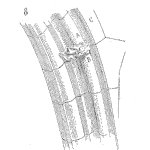
Making Use of Reliability Statistics
Mastering the statistical tools related to reliability engineering allows you to master reliability.
Identifying, characterizing, understanding, predicting, and improving reliability all require statistics. Let’s discuss how it works and what will work for you.
Variability causes failures.
From the variability of material properties to use conditions all lead to the uncertainty of when and what will fail. Statistics is the language of variability.
Since nearly everyone truly enjoyed their undergraduate probability and statistics course, let’s start discussing essential elements of reliability statistics.
Understanding when something will likely fail provides real value to the design team, the business, and the customer.
We don’t use statistics just because it’s cool (which it is, btw); we use statistics to reveal problems, characterize variability, and make decisions. We use statistics to create reliable products. Let’s review some case studies where reliability statistics made the difference.
Let’s explore maintenance planning for a fleet of escalators.
Then, let’s examine medical product field data and help the team focus on specific areas to improve the system’s reliability.
We’ll finish the discussion with a short discussion on the next steps to get started when confronted with some data.
Let’s find the motivation to use reliability statistics and find the resources to learn the statistical tools necessary to succeed.
This Accendo Reliability webinar originally broadcast on 3 February 2015.

To view the recorded webinar and slides visit the webinar page.
Related Content
When and Why Use Statistics episode
Statistics and Reliability episode
Reliability and Statistics episode

Making Use of Reliability Statistics
Let’s find the motivation to use reliability statistics and find the resources to learn the statistical tools necessary to succeed.

R Software and Reliability
Let’s explore R software's many capabilities concerning reliability statistics from field data analysis, to statistical process control.

Reliability Distributions and Their Use
Let’s explore an array of distributions and the problems they can help solve in our day-to-day relaibility engineering work.

Practical Application of DOE
Perry discusses the basics of DOE (design of experiments) and fundamentals so you can get started with they useful product development tool.

Fundamentals of Sample Size Determination
Let's discuss the 6 basic considerations to estimate the necessary sample size to support decision making.

Fundamentals of Measurement System Analysis
When we make a measurement, we inform a decision. It’s important to have data that is true to the actual value.

Creating Effective Reliability Graphics
One of the first things I learned about data analysis was to create a plot, another, and another. Let the data show you what needs attention.

PDFs, CDFs, and other ‘Fs’ — What the hell are they?
If you want a really easy introduction or review of these functions that help inform a decision – then check out this webinar.

Discrete Distributions
Sometimes we have to work out how many of them we need (if they make up a fleet) or how many spare parts we need to keep them running.

Why We Use Statistics
Let’s explore the ways we use, or should use, statistics as engineers. From gathering data to presenting, from analyzing to comparing.

How to Check a Regression Fit
Let’s explore what residuals are, where they come from, and how to evaluate them to detect if the fitted line (model) is adequate or not.

Basic Mathematical Symbols and Stuff
This webinar is a light (re)introduction into common mathematical symbols used in many engineering scenarios … including reliability.

Confidence in Reliability
Reliability is a measure of your product or system. Confidence is a measure of you. But we often forget this.

Practical Measurement Systems Analysis for Design
How to calculate Gage discrimination - the more useful result for a design situation, and even how to use it for destructive tests.

What is the Weibull Distribution?
For those who conduct reliability data analysis … or turning a jumble of dots (data points) into meaningful information

Where does the Bell Curve come from?
It is not just a ‘pretty shape’ that seems to work, It comes from a really cool physical phenomena that we find everywhere.

Fundamentals of Hypothesis Testing
Let’s examine a handful of parametric and non-parametric comparison tools, including various hypothesis tests.





 Ask a question or send along a comment.
Please login to view and use the contact form.
Ask a question or send along a comment.
Please login to view and use the contact form.
Leave a Reply